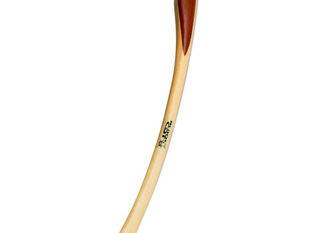
In the evening, before sunset, my father would dump the nightly ration in the centre of the ‘stage’. Na hrana! (Dinner time!) is his ritual call. He knows that the family would be near, waiting for his steps and the call.
He trains two cameras at the stage, as well as a sound-recorder. Using two cameras instead of just one has its reasons. Each camera uses eight AA rechargeable batteries. Their charge from two solar panels, 300 W each, placed on the riverbank. During the summer, plants and creatures trigger the cameras, so the batteries have to last through a busy 10 to 12 hour shift. With wind and storms the batteries’ storage quickly diminishes. So, it could easily happen that one of the cameras would not have enough power to cover the entire length of bait-site visits: from 6-7 in the evening to 5-6 next morning. In such a case, the other camera would compensate the loss of footage. There was also another reason. One of the cameras (a basic BolyGuard BG 310 model) gave a close-up view of the stage, while the other had a wider panoramic coverage (a BolyGuard BG 662). That way one could have an animal in fine detail with one camera, and catch wider collective scenes with the other. In addition, a sound recorder is used for capturing jackal vocalization – both short-range cackling, growling, hissing, etc. around the stage, as well as long-range howling. The recorder was a SONY IC Recorder, but it did not last long. A thunderstorm damaged it in the middle of the ’24 season. Afterwards, sound-recording depended for a time on what the camera-traps could catch. Since, however, they depended on movement before them to become active, off-frame vocalizations would be not recorded despite their happening close to the bait-site. The recording itself was of very restricted length – it could be only 30 sec. long, as the cameras were programmed for such length of video-clip capture. Although an usual howling event would be around 40 sec. long, at times vocal exchanges between individual members or whole groups could last for 2 min. and even more. Eventually, a new recorder was bought, but it proved to be very unsatisfactory. The reason was simple: all those cheap models were made to be in the palm of a reporting journalist, and not to be hanging from a tree out in the wild.
But back to the evening ritual: the dumping of the pail, the call, and then the adjusting of the cameras:
From there on it is jackal time. The sound-recorder is immediately activated by insects buzzing around, and by bird songs, particularly loud in May and June. A little while afterwards, the first eaters emerge:
As it is seen in the clip, the first comer is the Mother. The hour of coming is an hour and a half after serving, but still in full daylight (astronomical time: 19:41). With the long days of June, sunset would be only after two and a half hours: astronomical time 21:01.
Coming out in full daylight is a demonstration of trust in my father. In the days when I'm there she would come out only after dark.
Still, even with just my father's presence around, Mother waits for an hour before approaching the food. Maybe she is wary, or busy with the pups, or both. With pups born less than a month before – on 14-15 May – breastfeeding is the likeliest reason.
Two other jackals can be seen in the clip. The one on the right has the typical jackal pointed ears. This is Big Ear, a year-old jackal, one of the ’23 litter.

The young jackal peeping from the bushes to the left of Big Ear has distinctive rounded ears. He is a two-year old. At first, my father thought the tips of his ears might have been lost due to freezing in the winter colds. But then he noticed a second of the ’22 litter with such ears.
Discussing this with Prof. Nikolai Spassov of the Natural History Museum, they came to the conclusion that perhaps there was a round-ear strain in the family. Classically, jackals have big, sharply pointed ears, like those in Ancient Egyptian depictions of the Jackal God Anubis:

In any case, here we have a round-eared jackal – a trait for which he and his sister were called The Round Ears:

He is staring at the camera in his typical crouching posture.
There are a number of other interesting things to be seen in this video. In the first place, it is about the family eating order – the ‘pecking order’.
The nursing mother has the privilege of first pick. The younger ranks might come at the same time, but they would have to wait for the Mother to finish eating – as they are seen to do in the same video. The privilege lasts until the newborn cubs have left the birthing den at the age of two months, around mid-July.
Until that time, the Mother would be seen regularly at the bait-site, especially in the prime-time slot after serving dinner. The slot lasts from an hour or so after serving until around 22:00 (DST).
Access to the prime-time slot means that one could pick from the choice bits: fish, chopped up chicken carcasses, leftovers from my father’s table, and slices of bread – in this order. The soaked oat flakes – the ‘porridge’ - would come last. It is for the late-comers. To paraphrase the Latin adage: ‘For the latecomers – oats’.
The other junior members would either wait at the fringe of the camera-covered opening (the ‘stage’), or find other things to do, and come later.
The Father (Big Man) is another regular presence during the pup-rearing period of mid-May to mid-July. His rank allows him cherry-picking at prime-time, but he invariably leaves the treat to Mother. This is the reason he is never recorded in daylight.
His job is to prevent food looting from the bait-site by neighbouring Golden Jackals family groups. Big Man is estimated to be seven years old – a year older than the mother. With his powerful build and always bristling ridge he commands respect:

There is a third adult in the family – White Back. He is of the same age, or maybe a year
younger. Nikolai thinks he and the mother might be of the same litter:

White Back never comes out in daylight so his colour is uncertain. In night recordings, his hue looks whitish – hence the name. His role is to keep the youngsters in check and, particularly, the cubs when they leave the birthing den. For this reason, he is only very rarely seen during the birthing-den months: mid-May to mid-July. As mentioned earlier, during this period, the dominant senior adult at the bait-site are the alphas: the alpha-male Big Man, and the alpha-female Mother. After mid-July, both of them disappear, and the care of the family falls on the shoulders of the ‘Uncle’ – White Back.
Despite this dedicated service, Big Man never misses to pick up a quarrel with him. When he senses White Back’s presence, great scandals erupt, with much cackling and shouting.
Notwithstanding White Back’s dedicated care for the cubs, the Mother always takes Big Man’s side in the family rows. Of this and more about White Back we’ll tell you in the next story.






